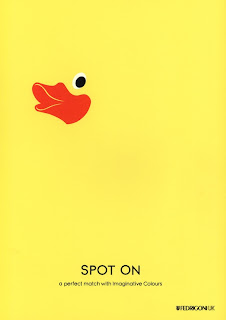1. Duotone
Plate used in printing a monochrome (one-color) original as a two-color reproduction. In the duotone process, the artwork is photographed twice. The second time, the screen angle is changed so that the dots on the second color plate (the duotone plate) fall between the dots on the first plate, producing a rich effect. A halftone illustration made from a single original with two different colors at different screen angles.
http://pinterest.com/
2. CMYK
The CMYK color model (process color, four color) is a subtractive color model, used in color printing, and is also used to describe the printing process itself. CMYK refers to the four inks used in some color printing: cyan,magenta, yellow, and key (black). Though it varies by print house, press operator, press manufacturer, and press run, ink is typically applied in the order of the abbreviation.
http://pinterest.com/
3. Spot Colour
In offset printing, a spot color is any color generated by an ink (pure or mixed) that is printed using a single run. The widely spread offset-printing process is composed of four spot colours: Cyan, Magenta, Yellow, and Key (black) commonly referred to as CMYK. More advanced processes involve the use of six spot colors (hexachromatic process), which add Orange and Green to the process (termed CMYKOG). The two additional spot colours are added to compensate for the ineffective reproduction of faint tints using CMYK colours only. However, offset technicians around the world use the term spot color to mean any color generated by a non-standard offset ink; such as metallic, fluorescent, spot varnish, or custom hand-mixed inks.
4. Monochrome and tints
Monochrome describes paintings, drawings, design, or photographs in one color or shades of one color. A monochromatic object or image has colors in shades of limited colours or hues.Images using only shades of grey (with or without black and/or white) are called grayscale or black-and-white. However, scientifically speaking, "Monochromatic light" refers to light of a narrow frequency.In color theory, a tint is the mixture of a colour with white, which increases lightness, and a shade is the mixture of a color with black, which reduces lightness. A tone is produced either by mixing with gray, or by both tinting and shading. Mixing a color with any neutral colour, including black and white, reduces the chroma, or colourfulness, while the hue remains unchanged.














No comments:
Post a Comment